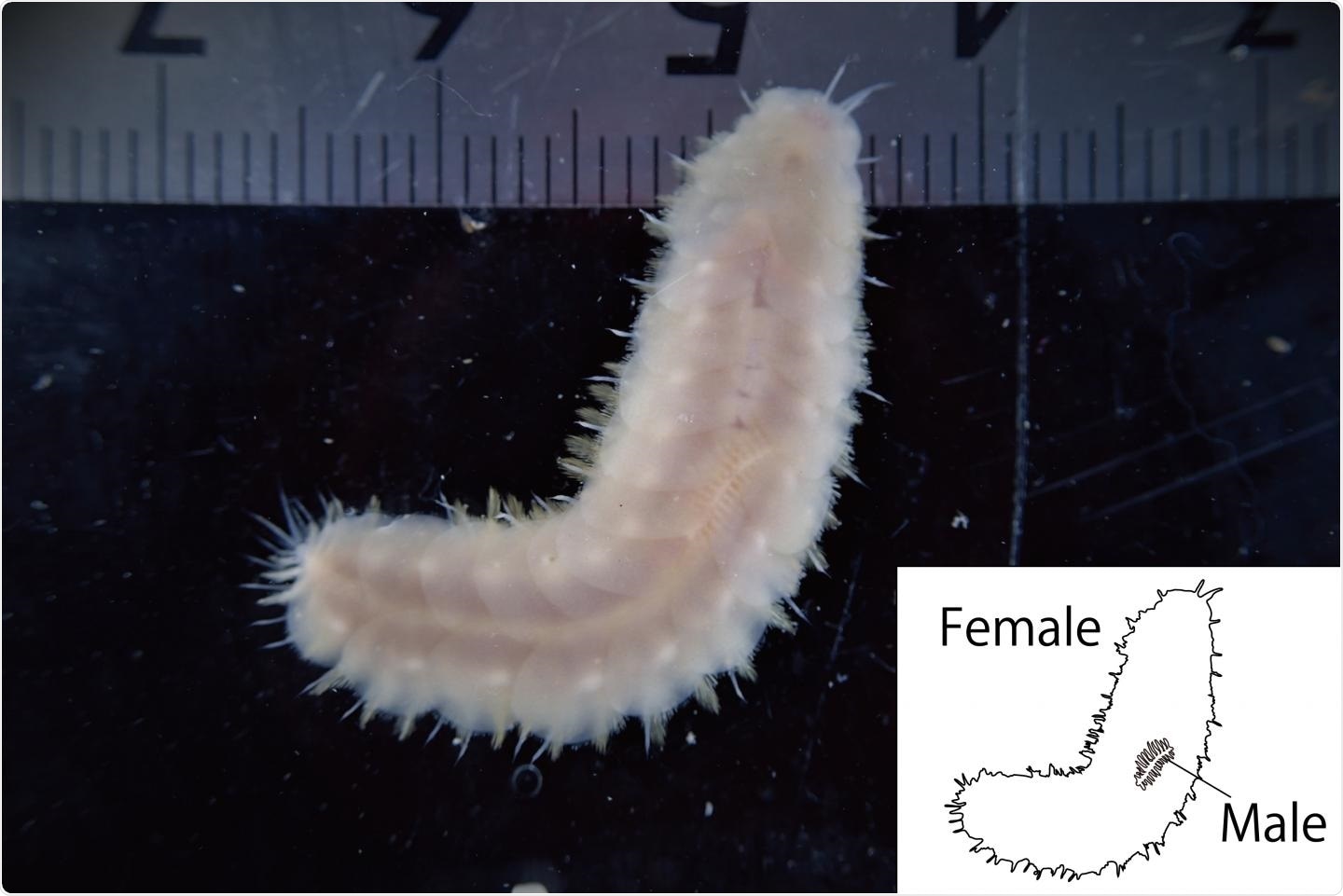Reviewed by Dan Hutchins, M.PhilJun 8 2021
An evolutionary riddle awaited in the Kumano Sea, off the southeast coast of Japan. Hermit crabs abandoned shells and mollusks were among the materials retrieved from the muddy seafloor by the researchers.

E. issunboushi. Image Credit: Toba Aquarium.
A team of researchers has discovered scale worms living usually in couples in and on these shells, with one notable difference compared to the almost 900 familiar species of scale worms: one was a fifth the size of its companion.
The results were published on the cover of the Journal of Zoological Systematics and Evolutionary Research.
The species is characterized by males being dwarf, with their minute bodies always riding on the dorsal side of females. It is the first case of extreme sexual size dimorphism in scale worms.”
Naoto Jimi, Study Author and Postdoctoral Researcher, National Institute of Polar Research, Research Organization of Information and Systems
Scale worms may be found in all oceans, from low-tidal zones to deep seas. They are distinguished by the scale-like structures on their backs, and roughly half of them are symbiotic, meaning they rely on a host organism to thrive. The newly found scale worm, called after Issun Boushi, a Japanese fairy tale figure, which stands just three centimeters tall, is the first to exhibit male dwarfism.
Extreme sexual size dimorphism is one of the most striking phenomena in evolutionary biology. While the origin has been well discussed and some causes have been suggested, the evolutionary history remains unclear.”
Naoto Jimi, Study Author and Postdoctoral Researcher, National Institute of Polar Research, Research Organization of Information and Systems
The researchers carried out comprehensive observations as well as genetic and morphological investigations. They discovered that scale worms always resided in shells, whether inhabited or not, and that males were never identified without a female counterpart; however, lone females were detected on occasion.
The researchers never detected this scale worm species surviving without a shell in over 200 maritime specimens. Their ancestor analysis, however, found that the species most likely originated from a free-living creature.
“Our data strongly suggest that, based on the ecological and behavioral features, the development of male dwarfism in E. issunboushi is more likely to be related with their symbiotic lifestyle inside gastropod shells occupied by a hermit crab,” added Jimi, noting that other kinds of symbiotic species share the same habitat but have not acquired male dwarfism.
The unique environmental and ecological traits may have led to the development of the dwarf male, but this needs to be tested based on additional cases in the future.”
Naoto Jimi, Study Author and Postdoctoral Researcher, National Institute of Polar Research, Research Organization of Information and Systems
Source:
Journal reference:
Jimie, N., et al. (2021) First evidence of male dwarfism in scale worms: A new species of Polynoidae (Annelida) from hermit crab and molluscan shells. Journal of Zoological Systematics and Evolutionary Research. doi.org/10.1111/jzs.12463.